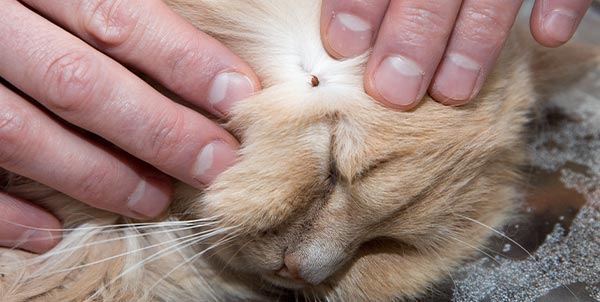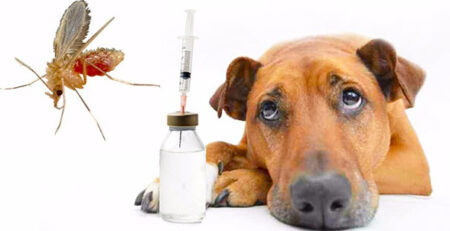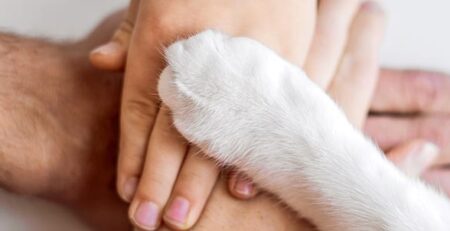Table of Contents
Ticks and infectious diseases in dogs and cats: a single bite is enough to make an animal seriously ill. Prevention is vitally important.
The tick is an external parasite that feeds on the blood of dogs and cats.
It is very “democratic” in its choice of organism to infest: it can attach to any animal and even humans, but dogs and cats are most at risk.
In fact, it only takes one bite to inject the infectious agents of even deadly dangerous diseases into your pet’s bloodstream.
Where are the ticks found?
Ticks are widespread everywhere and all over the world.
During the winter season, they tend to shelter from the cold and take refuge in crevices, among vegetation, under stones or burying themselves deep, but as temperatures rise, they re-emerge and set out in search of hosts to parasitize, remaining active until the following autumn.
Their preferred habitat is places rich in grass and shrub vegetation, and they prefer cool and humid climate.
Places such as stables, animal kennels, and pastures are among their favorite environments, but they can also lurk in the home: you might find them behind baseboards, in the hollows of blinds, or inside furniture.
How many kinds of ticks do you know?
There are dozens of species.
The size of ticks varies from a few millimeters to about 1 centimeter depending on the species and stage of development.
The best known are the
Ixodidae
(hard ticks) and the
Argasidae
(soft ticks).
Hard ticks have a characteristic chitinous dorsal shield that soft ticks lack, however.
The rounded body and head, which cannot be distinguished from the body, are equipped with a mouthparts (rostrum) capable of penetrating the skin and sucking blood.
The bite is generally painless because the ticks emit a substance containing anesthetic principles: they usually remain attached to the host for between 2 and 7 days and then drop off spontaneously.
What is the most common species?
The brown dog tick is the most widespread dog tick globally: it lives indifferently in both rural and urban environments partly because of its great ability to adapt to climatic conditions.
Its wide distribution is due to the fact that the dog is its primary host.
How does the tick’s biological cycle unfold?
Its biological cycle develops in 4 stages: egg, larva, nymph and adult.
After mating, adult females require a blood meal for egg maturation.
The blood meal is accomplished over ‘hours for soft ticks, days or weeks for hard ticks.
With one meal a female tick is able to double up to 120 times its volume and 200 times its initial weight.
The adult male, on the other hand, requires small amounts of blood to survive.
During the meal, the tick remains constantly attached to the host and detaches from it to lay eggs-a number ranging from 3,000 to 7,000.
Tick bite: why is it so dangerous?
The bite itself is not dangerous, but the risks depend on the possibility of contracting infections that these parasites can transmit as vectors.
A single bite from an infected tick can inject dangerous diseases into your dog’s bloodstream:
- Canine Ehrlichiosis
- Rickettsiosis
- Piroplasmosis or Babesiosis
What symptoms does a tick bite bring?
The pathogenic actions of the tick bite occur on several levels:
-anemiaand emaciation of the animal, a consequence of the large blood loss proportional to the number of parasites present
-local inflammationand bacterial infection due to penetration of the rostrum into the skin
-limb and lung paralysis caused by the inoculation of neurotoxic substances
What to do to prevent a tick from biting your dog?
The only remedy to prevent ticks from biting your dog is prevention, basically based on the use of repellent pesticides.
Among the various pharmaceutical formulations on the market, pipettes (Spot on) are the most widely used preparations: the active ingredient, applied scapularly and absorbed at the skin level, always remains in the circulation and is released over the next 30 days.
See your trusted veterinarian: he or she will be able to recommend the most suitable product based on your dog or cat”s age and weight.
Have you spotted a tick on your dog or cat?
At the end of each walk, carefully inspect the parts of the dog’s body where ticks usually attach: ears, muzzle, paws, armpits.
If detected, ticks should be removed immediately because the likelihood of the dog contracting an infection is directly proportional to the length of time the parasite remains on the host.
The tick, regurgitating part of the meal, can inoculate through its saliva and directly into the host’s bloodstream the dreaded pathogens.
How to properly remove a tick?
Ticks should be grabbed as close to the surface of the skin as possible to prevent the rostrum from getting stuck in the skin.
Specific extractors are currently on the market that allow them to be removed with a rotary motion.
Disinfect the animal’s skin after tick removal with a noncolored disinfectant.
Note the date the tick was removed and watch your pet carefully: symptoms of infection may occur even a few days after its removal.
The things not to do at all
Never use alcohol, gasoline, acetone, trichloroethylene, ammonia, oil or grease to remove ticks-these products only stun them, increasing the likelihood that they will regurgitate and release infectious agents into the animal’s bloodstream.
After removal, do not throw the ticks on the ground or step on them: doing so would cause the eggs to spread in the environment, further infesting it.
Rather, burn them or place them in an airtight container filled with alcohol or pesticide to die.
In case of a tick bite, we encourage you to consult our Staff Veterinary Doctors at any time, who will perform a thorough check on the animal and specific blood tests for diagnosis and treatment of any infection.
La Veterinaria Clinic is open daily h24 including holidays and with First Aid service from 8 pm to 8 am.
For the joy of seeing them HAPPY.











